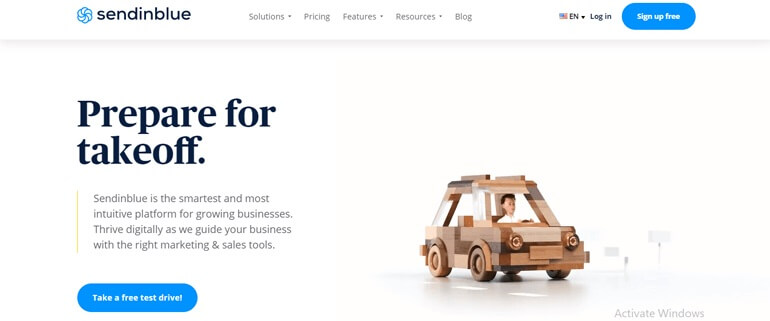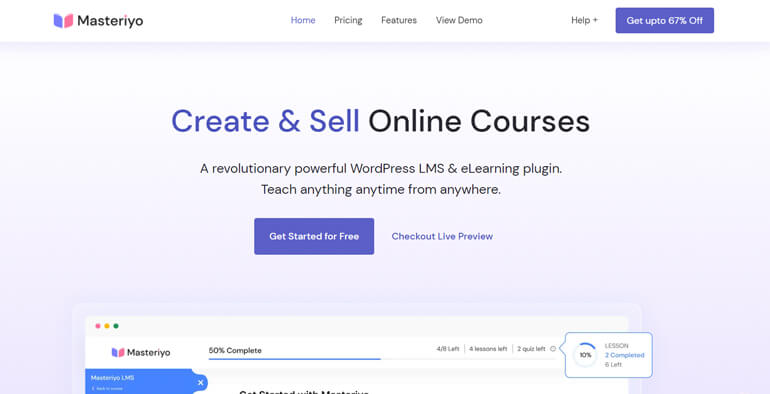Do you want to know what drip content is? Are you willing to use content dripping on your website? If so, this article is for you.
Drip content is a way of releasing your website content to the audience in a controlled or scheduled way over a period of time.
It’s usually popular among LMS and membership sites or even for an email marketing campaign. However, one might find it difficult to understand this feature.
That’s why we’re here with a complete guide on drip content.
So, let’s look at it in detail!
What is Drip Content?
Drip content is the method of delivering content to the user in batches over some pre-defined period.
That means when you drip content, you don’t offer your content to the user all at once. Instead, you give them parts of your content until they have full access.
It’s a kind of marketing strategy just like TV Series. You watch an episode in one week and have to wait till the next week to watch another episode.
You can drip content in various ways, like email newsletters, online courses, or subscription services.
For example, you own a learning management site (LMS), and it has a 10-week course on SEO with 10 modules.

Now, if you drip content on your course, you can allow your student to access only the first module of the course for the first week.
Simultaneously, as they complete one module, you can release the next module until all is covered.
Thus, you can provide access to a new piece of content every week, every fortnight, or at any pre-defined time.
Meanwhile, you can decide how often you want to release your content by scheduling them. For content dripping, you can also use marketing tools like Sendinblue, Drip, and HubSpot.

They all support content dripping for scheduling and automating drip content.
What are the Advantages of Using Drip Content on Your Site?
Releasing your content using drip content on your site is a win-win situation for publishers and users. While it keeps users committed to your site, they also find your content more engaging.
So, let’s look at some of the advantages of using drip content on your site:
1. Boosts User Engagement
One of the main aims of drip content is to boost user engagement. When you start releasing your materials as drip content, it creates a sense of excitement among users.
They look forward to receiving new content, which keeps them returning to your site and engaging with it.
Besides, if you add some interactive content like quizzes or surveys, it also keeps them motivated to complete the content.

Further, the consistent delivery of content over some time can increase the user retention rate.
2. Helps Protect Your Content
There’s always a chance of content theft for the digital product. Also, the risk of resharing the content is unavoidable.
Let’s say you offer all the content once the user signs up. Now, it isn’t a big deal for them to access the contents and cancel the membership anytime. And that’s your loss.
Also, if you have a policy of refunding, that’s an even worse case. Because a user signs up, downloads all the content, and then asks for a refund.
But if you drip content, there’re fewer chances for users to steal your content.

That’s because stealing only some portion of the content isn’t worth it.
3. Improves User Experience
When you deliver your content by dripping, the user doesn’t feel overwhelmed with too much information at once. It makes their experience more enjoyable and less stressful.
You can also drip content by personalizing it per the user’s interest and preference. This relevant and valuable content encourages users to interact and keeps them interested.
To make it easier to access the content, you can drip content through email newsletters or some mobile apps.
Thus, providing content gradually and consistently will likely improve user experience.
4. Creates More Trust
When you start providing your content progressively, it assures users that you’re working carefully to create content.
Publishing content consistently in every pre-defined time also gives you enough time to improve the quality of your work.
It demonstrates that you’re committing to providing valuable content rather than trying to make a quick profit in a short period.
Users can also feel a sense of authority and expertise in your work, eventually increasing trust.
What’s the Difference Between Drip Content and Regular Content?
Drip content and regular content are different in many ways. Let’s look at the main differences:
| Drip Content | Regular Content |
| Delivered in small chunks over a defined period. | Delivered all at once. |
| The main idea is to engage the user with valuable information in the long run. | Typically published at a specific time. |
| Drip content is in the form of email newsletters, social media posts, online courses, etc. | Regular content might be articles, videos, podcasts, or any other form of content. |
| Dripping content is a way of keeping users on your site. | Regular content is a way of getting users to visit your site. |
How to Create a Content Dripping Site?
As we discussed drip content above, you might still wonder how to create a content dripping site. Here’s how:
Step 1: Choose a Website Building Platform that Supports Content Dripping
To start, you should decide on the platform where you want to host your content. You might be willing to create a membership site, an LMS site, or anything else.
Among various website-building platforms, not every platform supports drip content. So, you should choose the platform carefully.
Meanwhile, platforms like WordPress, Squarespace, Wix, Teachable, etc., support content dripping.
Among them, WordPress, which covers 43% of the entire website, is the best content dripping website platform.

The best part of it is the themes and plugins. They let you use the template to build any kind of website and add required functionalities.
Meanwhile, it also has several plugins that let you drip content. On top of that, the platform is beginner-friendly and highly scalable.
If you are still confused about using WordPress, you can also refer to our comparison article on WordPress vs Blogger vs Wix.
Also, don’t miss our tutorial on creating a WordPress website.
Step 2: Create and Setup Your Content Dripping Website
The next step is creating and setting up your website. Let’s say you’re creating an LMS site using WordPress as an LMS.
Here, you should design a course and lessons and set them up. By the way, you can also use various LMS plugins to add different functionalities to your site.
Masteriyo is a great LMS plugin with a Content Drip addon, letting you drip content on your site.

You can follow our guide on creating an LMS website in WordPress and setting up the Masteriyo plugin.
Step 3: Create Your Content for Dripping
Next, you should develop a series of content to drip them one by one. These contents should align with your target and be structured similarly.
If you have an LMS site, your drip content might be a course with various lessons. Likewise, your drip content could be a series of blog posts, videos, infographics, etc.
Thus, create the content gradually so that you can release them at a pre-defined time.
Step 4: Schedule Your Drip Content
After you have your content ready, decide how often you want to release the content. You can schedule it as per your preference.
You could release those content weekly, bi-weekly, monthly, or any other interval you wish. Also, it would be best to decide early about which content you want to release first.
Step 5: Publish Your Content Dripping Site
As you complete setting up the entire website with drip content, you can publish your website.
Step 6: Monitor the Performance of Your Drip Content
After releasing your content through dripping, you should monitor its performance. That lets you know whether or not a drip campaign increases user engagement on your site.
You can look at metrics like click-through rate, rate of conversion, and so on. It can help you analyze user behavior, ultimately enabling you to improve your content strategy.
Some FAQs Related to Drip Content
What Types of Content can be Dripped?
Dripping interactive content like quizzes, courses, podcasts, and polls is highly beneficial. However, you can also drip videos, articles, and other content.
How Frequently Should I Drip Content?
The frequency of drip content depends upon the content you deliver and the target audience. For the best performance, it would be helpful to release the content and wait enough for users to digest it before releasing the following content. But you should also be aware that taking more time would reduce the audience’s interest.
What are the Best WordPress Drip Content Plugins?
What Does It Mean to Drip a Class?
Dripping a class means releasing its content gradually over a defined period instead of giving full access to students all at once. You can release the course lessons one by one over a period of time through drip content.
Which LMS Plugins Provide a Drip Content Feature?
Wrapping It Up!
That’s all from us on drip content and how to create a content dripping site. We’re confident that our detailed article made you clear about drip content.
In summary, drip content is a practice of releasing content in a batch over time rather than all at once. It increases user interaction and engagement. You should give it a try!
If you have any queries regarding drip content, please comment below. We’ll get back to you instantly.
With that, we’ve come to the end of the article. If you want to explore more about WordPress and other related topics, visit our blog page.
We frequently publish articles like how-to guides, theme and plugin collections, comparisons, and so on.
Also, don’t forget to follow us on Twitter and Facebook to get notified of our new articles and news.
Disclaimer: Some of the links in the post may be affiliate links. So if you purchase anything using the link, we will earn affiliate commission.